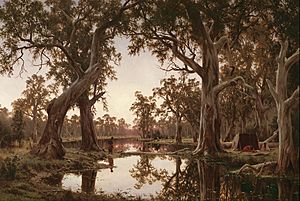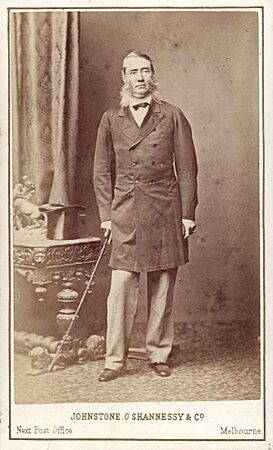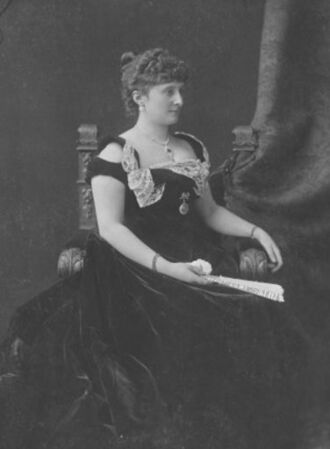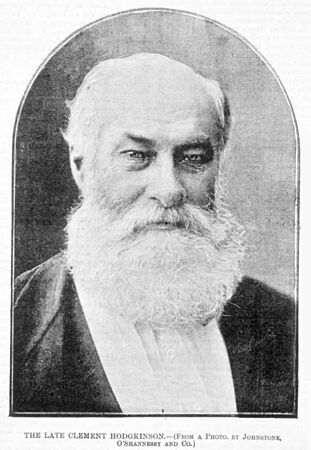Henry James Johnstone facts for kids
Henry James Johnstone (born in 1835, died in 1907) was a super talented photographer and artist from a long time ago. He was especially known for taking amazing pictures of people in Melbourne, Australia, during the 1870s and 1880s.
Contents
Early Life and Art Studies
Henry Johnstone was born in Birmingham, England, in 1835. Even when he was young, he loved art! He learned from different teachers and went to the Birmingham School of Design. Later, he even worked with his dad at their family's photography business.
Becoming a Top Photographer
Henry moved to Melbourne, Australia, in 1853 when he was just 18 years old. What an adventure!
In 1862, he took over a photography studio called Duryea and MacDonald. He renamed it Johnstone and Co. A few years later, in 1865, his business grew even bigger. It became Johnstone, O'Shannessy and Co, and he had a partner named Emily O’Shannessy and a co-owner, George Hasler.
Johnstone, O’Shannessy & Co. became the best portrait photographers in Melbourne. A portrait photographer takes special pictures of people. Important people like governors (who lead the state), visiting royalty (like princes and princesses), and politicians (people who work in government) all wanted their pictures taken by Henry's company.
Henry even impressed the Duke of Edinburgh when he visited Victoria. The Duke liked Henry's work so much that he made him his official Royal Photographer! That's a pretty big deal.
Henry's amazing photos were shown at big events like the Philadelphia Centennial Exhibition in 1875 and the Melbourne International Exhibition in 1888. Judges at these shows were very impressed by how good his work was.
-
Clement Hodgkinson, an important government official in Victoria around 1893.
Henry's Artistic Talent

Besides being a great photographer, Henry Johnstone was also a very talented artist. He continued to study art even after becoming a successful photographer. He learned from a sculptor named Charles Summers and later joined Louis Buvelot's painting school in 1867. He also studied at the Melbourne National Gallery School of Painting.
Henry became a member of important art groups like the Victorian Academy of Arts in 1871 and the Society of British Artists. This showed how respected he was in the art world.
Later Life and Travel
In 1876, Henry left Melbourne and moved to South Australia. There, he painted many realistic and detailed pictures of local places. Three of his paintings are now in the Art Gallery of South Australia. These include Evening shadows, backwater of the Murray and The Waterfall, Morialta.
After his time in Australia, Henry traveled a lot. He visited America and then moved to London in 1880. He continued to paint and show his artwork at the famous Royal Academy in London until 1900. He even painted special landscapes for a theater owner named Edgar Chapman.
Henry James Johnstone passed away in London in 1907 when he was 72 years old. He left behind a wonderful collection of photographs and paintings that we can still enjoy today!




